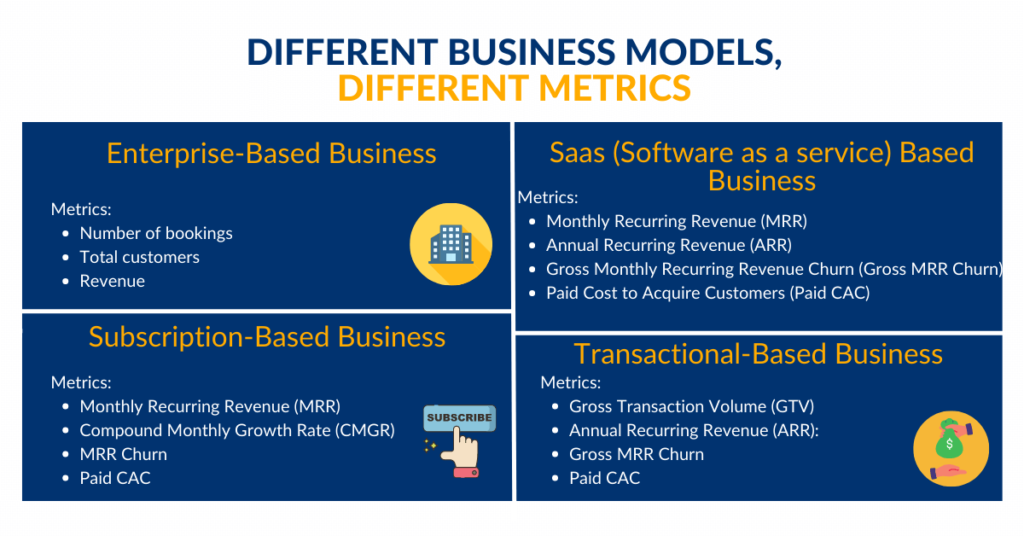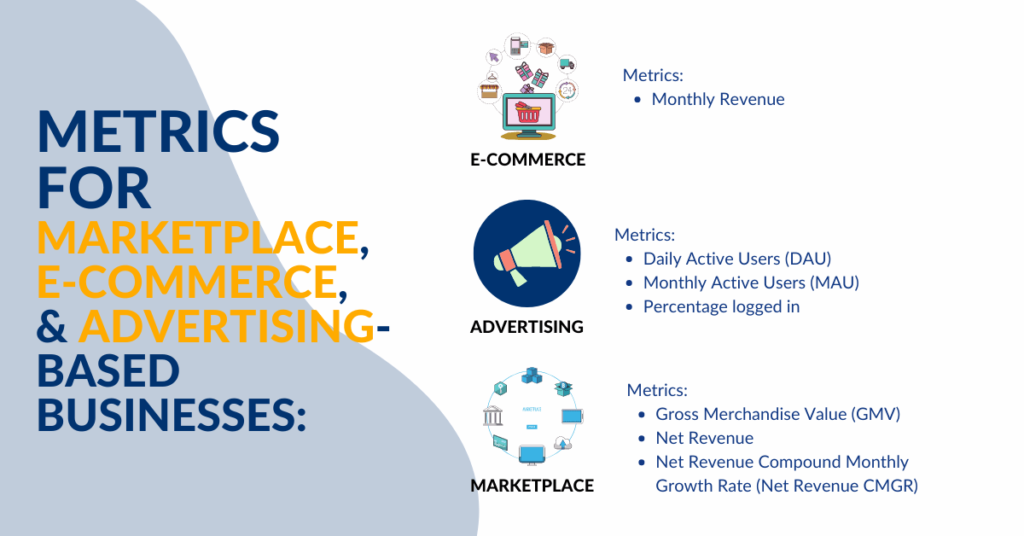Business model canvas. You surely have heard that one before. You probably know how to use one, but how do you manage the business model canvas metrics? How can they help your business? Well, in this article, we’ll talk about the business model canvas key metrics, for different types of businesses. Are you ready? Let’s go then.
What is the business model canvas?
Before we get to the metrics, let’s explain more about the business model canvas. As we mentioned in our previous blog, the Business Model Canvas (BMC) is a tool that enables you to visualize, design, and update your business model as you go. It helps you identify key elements of your business to develop a clear view of your value proposition.
You can also get a clear picture of your operations, customers, and finances.
The BMC will help you decide where to focus your time and attention as you start your online business.
Plus, is it only one page long, so you can easily share it with others to get feedback and update as you go? And on top of that, you won’t lose your nerves or hair while doing it.
How to Set the Right Metrics?
Usually, entrepreneurs rely on the industry vertical they are in, like Healthcare, FinTech, BioTech, etc. But this approach is wrong!
How you plan to charge your users is the right way to think of metrics. Depending on your business idea, there is 99% that your product will fit in one of these models.
There are a lot of business models, and metrics entrepreneurs should pay attention to. In this article, we will analyze the seven main types of business models. So, let’s discuss these business models and define what metrics you should use in each case.
1. Enterprise-Based Business
An enterprise company sells software or services to other large businesses like Facebook, Google, etc. When you work with enterprises, it means you work in terms of contracts. This means it’s your predominant focus from which you can frame your metrics.
Some examples include: Docker, Cloudera, and FireEye
What are the key metrics to track?
- Number of bookings
meaning the total number of contracts/commitments your company has;
- Total customers,
The total number of unique customers that you get;
- Revenue,
A value that you get after you provide the required services.
Common mistakes for Enterprise model:
Confusing “Bookings” with “Revenues” and implementing contracts when working with the enterprises. The thing is, startups haven’t delivered any services unless the contract is fulfilled. So, you cannot report the revenue since you haven’t provided any service.
2. Saas (Software as a service) Based Business
The business under this category sells subscription-based licenses for a cloud-hosted software solution. This model will charge users monthly for the provided software.
Examples: Mailchimp, Salesforce, Sendbird.
Key metrics to tracκ:
- Monthly Recurring Revenue (MRR),meaning that people like the product and agree to pay for the subscription every month;
- Annual Recurring Revenue (ARR) shows the pace of revenue growth compared to the absolute revenue number. It would be best if you tracked this metric in comparison with MRR to conduct the annual situation of the business when it comes to subscribers;
- Gross Monthly Recurring Revenue Churn (Gross MRR Churn) — pay attention to this metric if you are at the early stage of your business development and don’t have a large group of customers yet;
- Paid Cost to Acquire Customers (Paid CAC) — this metric is for cases when you decide to experiment with advertising and are ready to pay to acquire users.
Common Mistakes for the SaaS model:
It would be best if you did not confuse ARR and ARRR and primarily use them interchangeably. In this case, you won’t have a recurring revenue business if the users do not like the product and are unwilling to pay for a subscription.
3. Subscription-Based Business
A business model similar to a SaaS model but usually has a lower revenue per customer. Examples of companies are Linkedin, Netflix, and any other company generally targeting B2C and offering a cheaper monthly subscription affordable for every customer. The metrics are pretty much the same here in a SaaS model.
Examples: The Athletic, Dollar Shave Club, Netflix
Key metrics to track:
- Monthly Recurring Revenue (MRR) — users who are willing to pay to receive the complete set of features of your product;
- Compound Monthly Growth Rate (CMGR) — pay attention to this metric since, quite often in a subscription-based company, the subscription revenue is smaller;
- MRR Churn — just like at a SaaS company, this metric is essential when you’re in the early stage and have only a few customers. Losing even one or two has a real impact on your revenues;
- Paid CAC — this metric is for cases when you decide to experiment with advertising and are ready to pay to acquire users.
Common Mistakes for Subscription model:
Don’t measure CMGR as a simple average, instead use discrete monthly growth rates.
4. Transactional-Based Business
The type of business model that will charge a fee for each transaction.
Examples: Stripe, PayPal, Coinbase, Brex — since these companies use a fee from the user every time they use the product.
What are the key metrics to track?
- Gross Transaction Volume (GTV),
Meaning that people like the product and agree to pay for the subscription every month; - Annual Recurring Revenue (ARR):
It shows the pace of revenue growth compared to the absolute revenue number. You should track this metric in comparison with MRR to offer the annual situation of the business when it comes to subscribers; - Gross Monthly Recurring Revenue Churn (Gross MRR Churn):
You should pay attention to this metric if you are at the early stage of your business development and don’t have a large group of customers yet; - Paid Cost to Acquire Customers (Paid CAC)
This metric is for cases when you decide to experiment with advertising and are ready to pay to acquire users.
5. Marketplace-Based Business
A company that acts as an intermediary between two consumers, connecting them to buy or sell a good or service. Examples of companies here include Airbnb, eBay, and Booking.com. Marketplaces connect sellers and buyers to exchange a good or service.
What are the key metrics to track?
- Gross Merchandise Value (GMV)
For example, if the user sets a price for a good he wants to rent or sell, from that price, a percentage will go to the marketplace company. - Net Revenue
This is the percentage of the GMV that a marketplace company gets in its bank account. - Net Revenue Compound Monthly Growth Rate (Net Revenue CMGR).
Since Marketplaces are typically B2C companies, the volume of users matters. That’s why you should always check User Retention because a consumer that only uses the platform once and doesn’t return won’t help your Revenue and your company grow.
Common Mistakes for Marketplace model:
A common mistake for a marketplace business model is blending paid user acquisition with organic user acquisition. If you don’t separate the two metrics, you won’t have a good sense if your growth will be sustainable.
6. E-Commerce Based Business
An E-commerce based business is a company that sells physical goods online. Generally, they manufacture and inventory those goods (an excellent example of this business model is Amazon). In e-commerce, you may make the products, but you can also source them — Amazon does that with some of their effects on the platform.
What are the key metrics to track?
- Monthly Revenue
Since there are no recurring purchases, you only need to track the monthly Revenue.
7. Advertising-Based Business,
An advertising company offers a free service and derives revenue from selling advertisements in the free service. Examples of companies that work on that model are Snapchat, Twitter, and Reddit — platforms that an increased number of users use. They are essential to your company — especially if you are early.
What are the key metrics to track?
- Daily Active Users (DAU)
This is the number of unique active users in a 24-hour day, averaged over some time. The users who do not return to your platform are not helping. You need to know how to keep them there. - Monthly Active Users (MAU) is the number of unique active users in one month. How many kept using your platform after day one.
- Percentage logged in — users with registered account login and logged out over the same 30-day period.
Common Mistakes for Advertising model:
A common mistake for an advertising company is calculating the retention of their users. Some founders even forget to consider that at some point and regret it.
-
Conclusion
Focusing on the precise metrics for your business model is critical. These metrics should give you a clear picture of your business structure and goals to achieve. Focus on what metrics you think will be the best option for your business and go for them.
I’m curious. Have you ever taken a look at some metrics from your business model canvas? Were you aware of what the business canvas is? Let me know in the comments below and as always, feel free to contact me for any questions you may have.









0 Comments